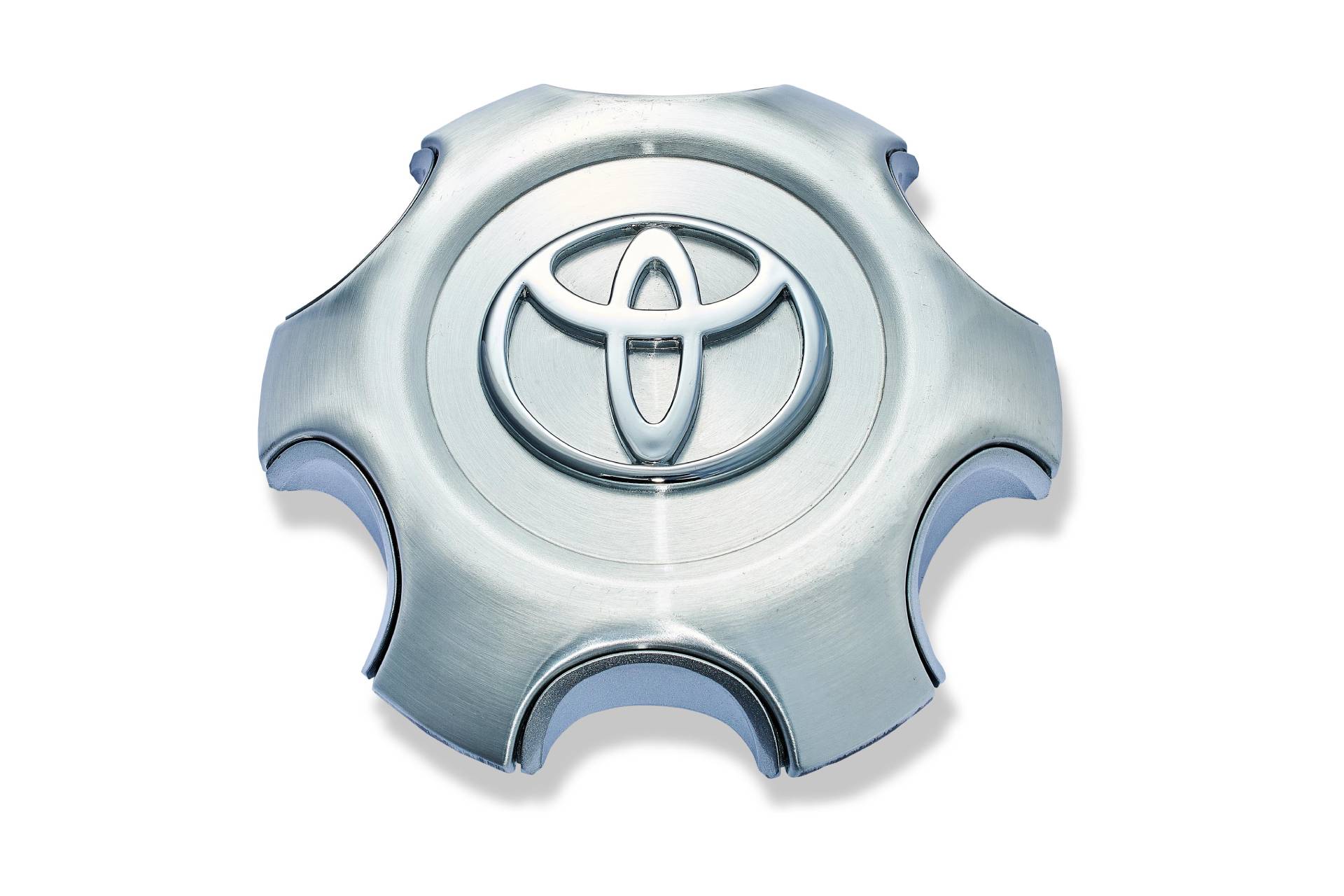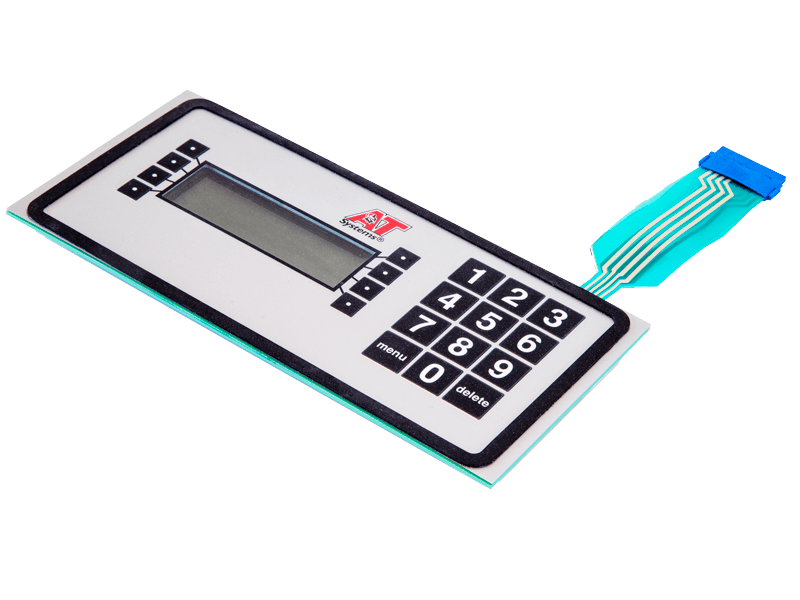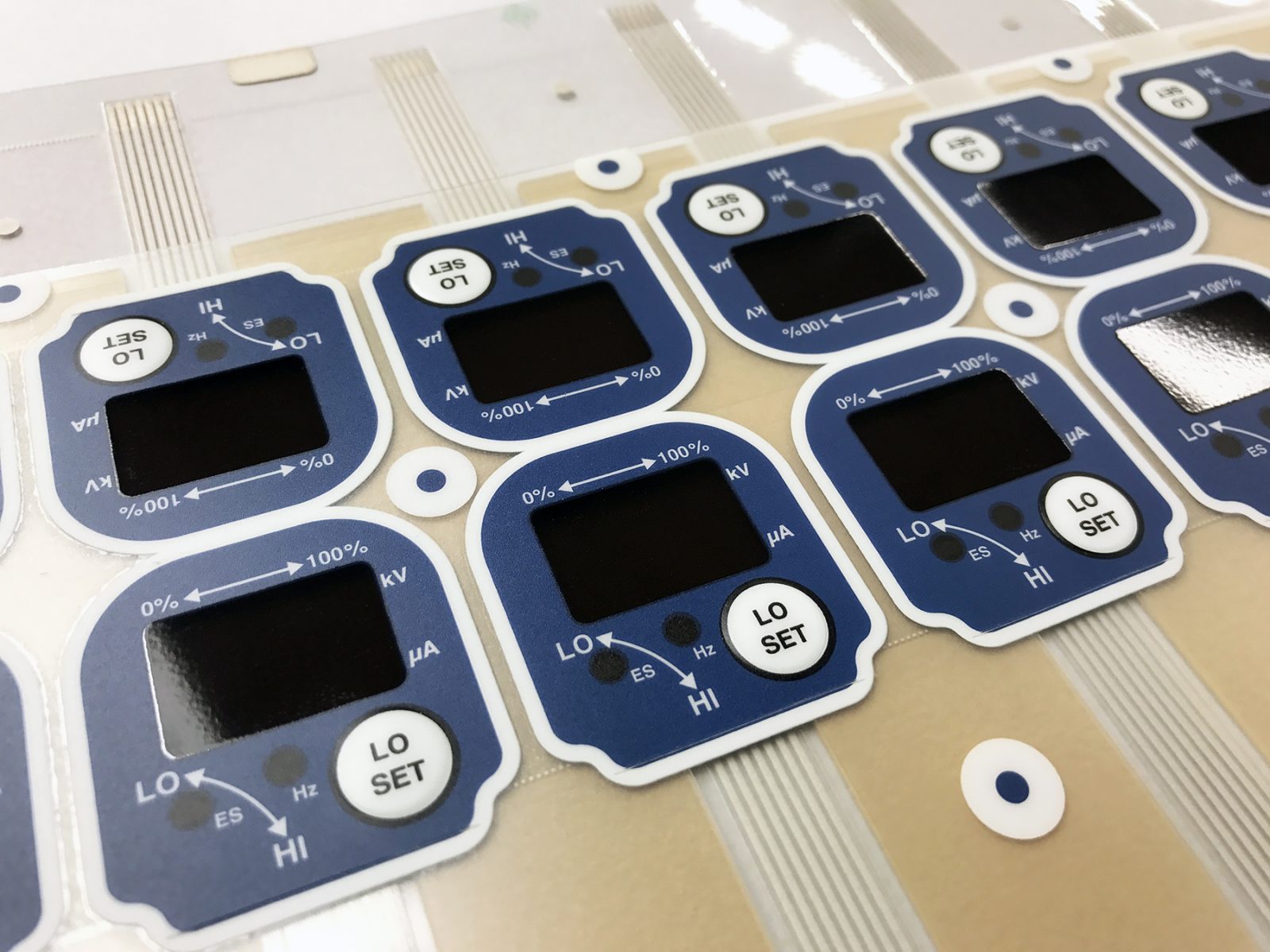Industry-Leading Membrane Switch Manufacturer with Quality Accreditation
Exactly How Membrane Switch Technology Functions and Its Duty in Customer User Interface Design
Membrane button modern technology is an advanced approach that integrates layered materials for touch-sensitive input. Its design includes graphic overlays, conductive layers, and sticky components that engage when pushed. This communication not just completes an electric circuit yet also affects the total customer experience. Comprehending the ins and outs of this innovation discloses its significant influence on individual interface style, prompting questions about its applications and future advancements in numerous sectors.
Understanding Membrane Switch Innovation
Membrane button modern technology works as an essential part in modern-day interface design. This innovation integrates graphic overlays, touch-sensitive membrane layers, and circuit layers to create a small, trustworthy input method for various gadgets. The layout commonly consists of several layers, consisting of a published visuals layer that allows customers to connect with the device through responsive comments. Membrane buttons are known for their durability, resistance to dampness, and convenience of cleansing, making them suitable for atmospheres where typical mechanical switches may stop working. Their low-profile style makes it possible for smooth combination into tools, adding to a streamlined appearance. On top of that, Membrane switches can be tailored with numerous colors, appearances, and signs, improving user experience and visual allure. This adaptability makes them preferred in consumer electronic devices, medical devices, and commercial controls, where intuitive communication is important. On the whole, Membrane switch innovation stands for a substantial improvement in just how individuals engage with digital user interfaces.
Secret Parts of Membrane Changes
Membrane switches over contain a number of key components that contribute to their functionality and style. The conductive layer materials, adhesive and assistance layers, and visuals overlay layout each play an essential duty in guaranteeing suitable performance and user communication. Understanding these parts is important for effective individual interface style.
Conductive Layer Products
Conductive layer materials play a vital duty in the functionality and integrity of Membrane switches. These products are responsible for completing electric circuits when pressure is applied to the button. Generally, a mix of conductive inks, such as silver or carbon, is utilized to produce these layers. Silver conductive ink is favored for its remarkable conductivity and longevity, while carbon ink is typically made use of for economical applications. The selection of product affects not just the electrical efficiency yet likewise the general lifespan of the button. In addition, the density and composition of conductive layers can influence responsive comments and switch actuation. Picking the proper conductive material is essential for guaranteeing suitable efficiency in diverse customer interface applications.
Glue and Assistance Layers
Sticky and assistance layers are crucial parts that add to the structural stability and performance of Membrane switches. These layers supply a durable foundation, guaranteeing that the various aspects of the Membrane button remain firmly bound and properly aligned throughout their operational life. The glue layer facilitates the add-on of the button to the underlying surface, supplying longevity versus environmental aspects such as wetness, temperature level variants, and mechanical tension. At the same time, support layers enhance the switch's rigidity, preventing deformation throughout usage and contributing to a constant responsive feedback. Together, these elements play a crucial role in maintaining the efficiency and long life of Membrane switches, eventually influencing the total user experience in user interface style.
Graphic Overlay Layout
Often neglected, visuals overlay design plays an essential role in the capability and aesthetics of Membrane buttons. This layout primarily functions as the interface in between the user and the electronic devices, offering both aesthetic charm and operational quality. Effective visuals overlays make use of shade, typography, and symbols to lead users in recognizing and navigating controls tool functions. The selection of products influences longevity and responsive responses, guaranteeing the overlay stands up to wear while maintaining a pleasurable user experience. In addition, exact positioning of the overlay with the underlying parts is vital for optimal efficiency. To conclude, thoughtful graphic overlay design enhances functionality, adds to brand identification, and inevitably influences customer complete satisfaction in gadgets making use of Membrane switch innovation.
The Production Process of Membrane Switches
The production process of Membrane switches entails numerous essential steps that assure capability and durability. Initially, a visuals overlay is created, incorporating interface elements and branding. This overlay is printed onto a flexible substratum, typically polyester or polycarbonate, using accuracy printing methods to determine quality and color accuracy.Next, adhesive layers are applied, followed by the integration of conductive traces, often made from silver or carbon, which are crucial for electrical connectivity. These traces are screen-printed or etched onto a separate layer. After this, a spacer layer is included to create the required void in between the overlay and the circuit layer, permitting responsive comments when activated.Finally, the elements are put together and checked for quality control, ensuring that each Membrane button meets the needed specifications for performance and reliability. This precise process causes a durable item suited for various applications in user interface layout.
Benefits of Using Membrane Switches

Membrane changes deal countless advantages that make them a preferred option in user interface layout. One considerable advantage is their compact and lightweight nature, enabling structured styles in various applications. In addition, Membrane buttons supply a secured interface, shielding against dust, moisture, and contaminants, which boosts sturdiness and dependability. They are additionally very adjustable, allowing designers to develop unique graphics and layouts customized to specific customer needs.Another advantage is their cost-effectiveness, go to my site as they commonly require less material and labor compared to traditional buttons. The tactile feedback of Membrane switches can be engineered to boost individual experience, providing a rewarding feedback without the bulk of mechanical elements. Membrane switches can be easily incorporated into varied settings, such as medical devices, commercial equipment, and consumer electronics. Generally, these advantages highlight the expanding appeal of Membrane buttons in modern-day interface style.
Applications in Numerous Industries
Extensively utilized across different industries, Membrane switch modern technology has found its location in applications ranging from clinical tools to consumer electronics. In the healthcare sector, these buttons are important to devices such as analysis devices and client tracking systems, offering resilient, easy-to-clean interfaces that endure sterilization processes. The vehicle industry utilizes Membrane switches in dashboards and control panels, supplying dependable operation in tough environments.Consumer electronics, consisting of home appliances and video gaming consoles, take advantage of the smooth design and customizability of Membrane buttons, improving individual communication. Additionally, industrial equipment utilizes these switches for control board, ensuring resistance to dust and dampness while keeping functionality.Moreover, the aerospace and armed forces markets make use of Membrane buttons for sturdy applications, where reliability and performance are vital. In general, Membrane button innovation offers varied industries by combining performance, toughness, and aesthetic charm, making it a functional option for modern-day individual interfaces.

Designing User User Interfaces With Membrane Changes
When making interface with Membrane switches, mindful factor to consider of both functionality and appearance is essential. Membrane switches over provide a smooth, low-profile layout that can boost visual allure while preserving usability. Developers need to focus on button format, guaranteeing instinctive positioning for ease of operation. The tactile comments offered by the Membrane button is crucial; it can affect user complete satisfaction and overall experience.Additionally, shade and visuals aspects should align with the brand identity, enhancing recognition and knowledge. Selecting durable products that withstand wear and tear is likewise essential, as durability contributes to use over time. Integrating backlighting can boost exposure in numerous lights conditions, better improving user interaction. Inevitably, a well-designed Membrane switch interface balances both type and feature, ensuring that the individual experience is both efficient and engaging, fulfilling the demands of varied applications throughout industries.
Future Trends in Membrane Switch Technology
As Membrane button technology develops, the assimilation of smart functionalities is becoming increasingly popular. These advancements enable enhanced interactivity and connectivity within customer interfaces (membrane switch manufacturer). In addition, the change in the direction of environment-friendly materials mirrors an expanding dedication to sustainability in design techniques
Smart Membrane Changes

Eco-Friendly Products Usage
Among the innovations in Membrane switch technology, a significant trend is emerging in the direction of making use of eco-friendly products. Suppliers are significantly prioritizing sustainability by incorporating eco-friendly plastics and safe inks, lowering environmental impact. This change not only lines up with global ecological standards but additionally addresses consumer demand for greener items. Technologies in product science have enabled the development of resilient, environmentally friendly choices that preserve performance without compromising top quality. These products use equivalent performance to traditional choices while minimizing waste and toxicity. As sectors end up being more eco-conscious, the assimilation of lasting techniques in Membrane button production is expected to climb, enhancing a commitment to ecological duty and leading the method for more sustainable interface services in the future.
Often Asked Questions
Just How Do Membrane Switches Over Differ From Traditional Mechanical Switches?
Membrane changes differ from typical mechanical buttons mainly in construction and operation. They make use of flexible layers that produce a secured user interface, whereas mechanical buttons rely upon physical motion and call, resulting in unique resilience and tactile responses qualities.
Can Membrane Changes Be Customized for Particular Applications?
Membrane switches can without a doubt be personalized for details applications - membrane switch manufacturer. Manufacturers design them to fulfill unique requirements, enabling for tailored formats, graphics, and capabilities that boost individual interaction and fit specific functional demands efficiently
What Is the Life expectancy of a Membrane Layer Switch?
The lifespan of a membrane button usually varies from 1 to 5 million actuations, depending upon elements such as material quality, ecological conditions, and usage regularity. Regular screening can aid identify its longevity and integrity in applications.
Are Membrane Switches Waterproof or Immune to Chemicals?
Membrane switches can be created to be waterproof and resistant to chemicals, depending upon the products used and producing procedures. Correct sealing and protective coatings enhance their sturdiness in numerous ecological conditions and applications.
Just How Do Membrane Switches Over Influence Device Power Consumption?
Membrane switches can greatly impact device energy consumption by guaranteeing effective procedure. Their low power demands during activation additional info aid lessen power usage, adding look here to longer battery life and overall enhanced performance in digital gadgets. Membrane switches are recognized for their longevity, resistance to wetness, and simplicity of cleansing, making them suitable for settings where traditional mechanical buttons may stop working. The automotive market employs Membrane buttons in dashboards and control panels, giving reputable procedure in difficult environments.Consumer electronics, consisting of home appliances and pc gaming consoles, benefit from the smooth design and customizability of Membrane buttons, enhancing individual interaction. Additionally, industrial machinery utilizes these buttons for control panels, guaranteeing resistance to dirt and dampness while keeping functionality.Moreover, the aerospace and armed forces sectors use Membrane switches for tough applications, where reliability and performance are vital. The evolution of Membrane switch technology is going into an amazing stage with the introduction of smart Membrane switches, which incorporate sophisticated features and functionalities. Membrane switches vary from standard mechanical switches mainly in building and operation.